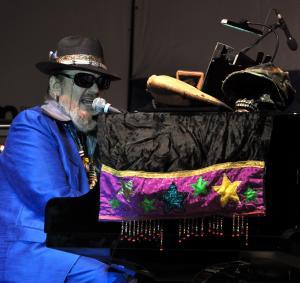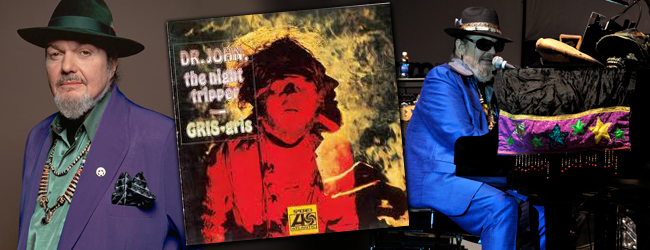
As I was getting ready to write this month’s article, I learned that my own personal hero, Dr. John, was named to the 2011 induction class of the Rock & Roll Hall of Fame! [Editor’s note: Dr. John was just inducted into the hall of fame last month in a grand ceremony.] So I decided to hold off on my planned article and write one about Dr. John instead. Who is Dr John? “Well Child, If’n yo don’t kno, Git Right and Sit Tight cos I’m a bout to tell Ya’ll all De Dis, Dat, and D‘udda!” Dr. John, or Mac Rebennack as known to friends and family, is universally celebrated as the living embodiment of the rich musical heritage exclusive to New Orleans. His very colorful musical career began in the 1950s, when he wrote and played guitar on some of the greatest records to come out of the Crescent City, including recordings by Professor Longhair, Art Neville, Joe Tex and Frankie Ford. Many times recording took place in illegal studio sessions that mixed both white and black musicians in the same room, quite unusual for the day — though not for the town.
A notorious gun incident that resulted in a missing inger forced Dr. John to give up the guitar and concentrate on organ and piano. Further trouble at home sent the good doctor west in the 1960s, where he continued to be in demand as a session musician, playing on records by Sonny and Cher, Van Morrison, Aretha Franklin and The Rolling Stones’ infamous Exile On Main Street, to name a few. It was during that time that he also launched his solo career, developing the charismatic persona of Dr. John, The Night Tripper. Adorned with voodoo charms and regalia, a legend was born with his breakthrough 1968 album Gris-Gris, which established his unique blend of voodoo mysticism, funk, rhythm & blues, psychedelic rock and Creole roots. Several of his many career highlights include the masterful album Sun, Moon and Herbs in 1971 which included cameos from Eric Clapton and Mick Jagger and 1973’s In The Right Place, produced by Allen Toussaint and backed by The Meters, which contained the chart hits “Right Place Wrong Time” and “Such A Night.” Dr. John garnered Grammy award wins in 1989, 1992, 1996 and 2000. In 2004 his musical love letter to the city of New Orleans, “N’awlinz, Dis, Dat or D’udda,” was awarded the prestigious Académie Charles Cros 57ème Palmarès award in France. It was the first time since the 1970s that an artist from North America received the award.
He has also received an additional six Grammy nominations over the years. In 2007, he was nominated for a Grammy for Sippiana Hericane, his hurricane Katrina benefit album. Other awards include the American Society of Young Musicians 2007 Trailblazer Award.
After hurricane Katrina and government bungles bashed New Orleans in 2005, Dr. John immediately stepped up to the plate with both generous relief fund-raising concerts, recordings, and angry public words of protest. In 2008 he released City That Care Forgot, an album winning him a Grammy for Best Contemporary Blues Album.
2010’s release, Tribal, has Dr. John revisiting that classic, swampy gris-gris style that put him on the map. After a half century of creating music for others and himself, Dr. John continues to write, arrange, produce and interpret with a passion that has yet to wane. He continues to consistently tour, dazzling and delighting audiences across the globe. Most recently, Dr. John has made cameo appearances on the hit HBO series Tremé, which focuses on New Orleans post-Katrina, and the musical and cultural survival of the city.


